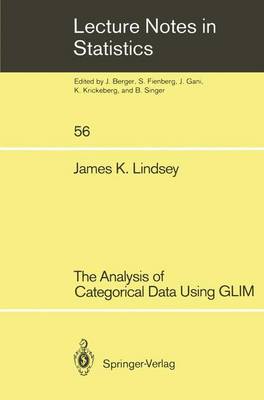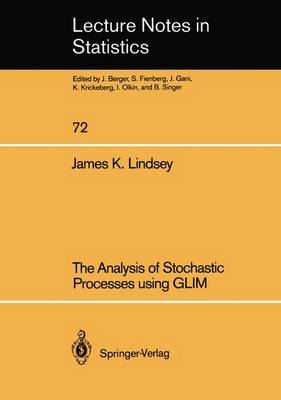Lecture Notes in Statistics
2 primary works
Book 56
The present text is the result of teaching a third year statistical course to undergraduate social science students. Besides their previous statistics courses, these students have had an introductory course in computer programming (FORTRAN, Pascal, or C) and courses in calculus and linear algebra, so that they may not be typical students of sociology. This course on the analysis of contingency tables has been given with all students in front of computer terminals, and, more recently, micro computers, working interactively with GLIM. Given the importance of the analysis of categorical data using log linear models within the overall body of models known as general linear models (GLMs) treated by GLIM, this book should be of interest to anyone, in any field, concerned with such applications. It should be suitable as a manual for applied statistics courses covering this subject. I assume that the reader has already a reasonably strong foundation in statistics, and specifically in dealing with the log-linearllogistic models. I also assume that he or of GLIM itself. In she has access to the GLIM manual and to an operational version other words, this book does not pretend to present either a complete introduction to the use of GLIM or an exposition of the statistical properties of log-linearllogistic models. For the former, I would recommend Healy (1988) and Aitkin et al (1989). Por the latter, many books already exist, of which I would especially recommend that of Pingleton (1984) in the present context.
Book 72
The aim of this book is to present a survey of the many ways in which the statistical package GLIM may be used to model and analyze stochastic processes. Its emphasis is on using GLIM interactively to apply statistical techniques, and examples are drawn from a wide range of applications including medicine, biology, and the social sciences. It is based on the author's many years of teaching courses along these lines to both undergraduate and graduate students. The author assumes that readers have a reasonably strong background in statistics such as might be gained from undergraduate courses and that they are also familiar with the basic workings of GLIM. Topics covered include: the analysis of survival data, regression and fitting distributions, time series analysis (including both the time and frequency domains), repeated measurements, and generalized linear models.

